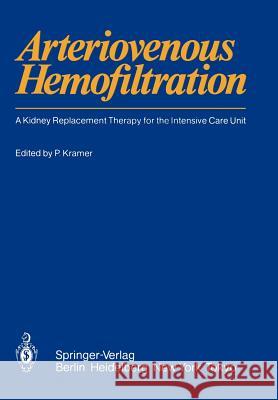Arteriovenous Hemofiltration: A Kidney Replacement Therapy for the Intensive Care Unit » książka
Arteriovenous Hemofiltration: A Kidney Replacement Therapy for the Intensive Care Unit
ISBN-13: 9783540153177 / Angielski / Miękka / 1985 / 244 str.
Discovery and Relative Importance of Continuous Arteriovenous HemofIltration Lee W. Henderson Continuous arteriovenous hemofiltration (CAVH) has seen a brisk upswing in popularity in Europe since its introduction by Dr. Kramer and colleagues from Gottingen, West Germany in 1977 1]. In the United States, the technique re- ceived approval as a clinical tool from the Food and Drug Administration in April 1982. This approval flowed, in no small measure, from the extensive expe- rience reported from Europe and in particular West Germany e. g., 2, 3]. Reports of its clinical utility now have begun to appear in the United States 4]. Removal of excess total body water using synthetic membranes in an extracor- poreal circuit dates back to the work of Alwall and the artificial kidney that he designed which permitted utilization of a hydrostatic pressure gradient to moti- vate water flow across the membrane 5]. Kolffs original rotating drum with its unencased membrane required an osmotic driving force 6]. Hemofiltration, the use of the filtration process to remove uremic solutes with the artificial kidney, in analogy with the glomerulus, was reported in 1967 7].This was made possible by the availability of synthetic membranes with far higher hydraulic permeability (approximately 10 times higher) than conventionally used cellulosic hemodialysis membrane. Specific applications of these high flux membranes to the removal primarily of excess total body water followed shortly thereafter 8]."











